Product Strategy Frameworks
In today's competitive landscape, a rock-solid product strategy framework is the key to developing successful products that captivate customers and accelerate growth.
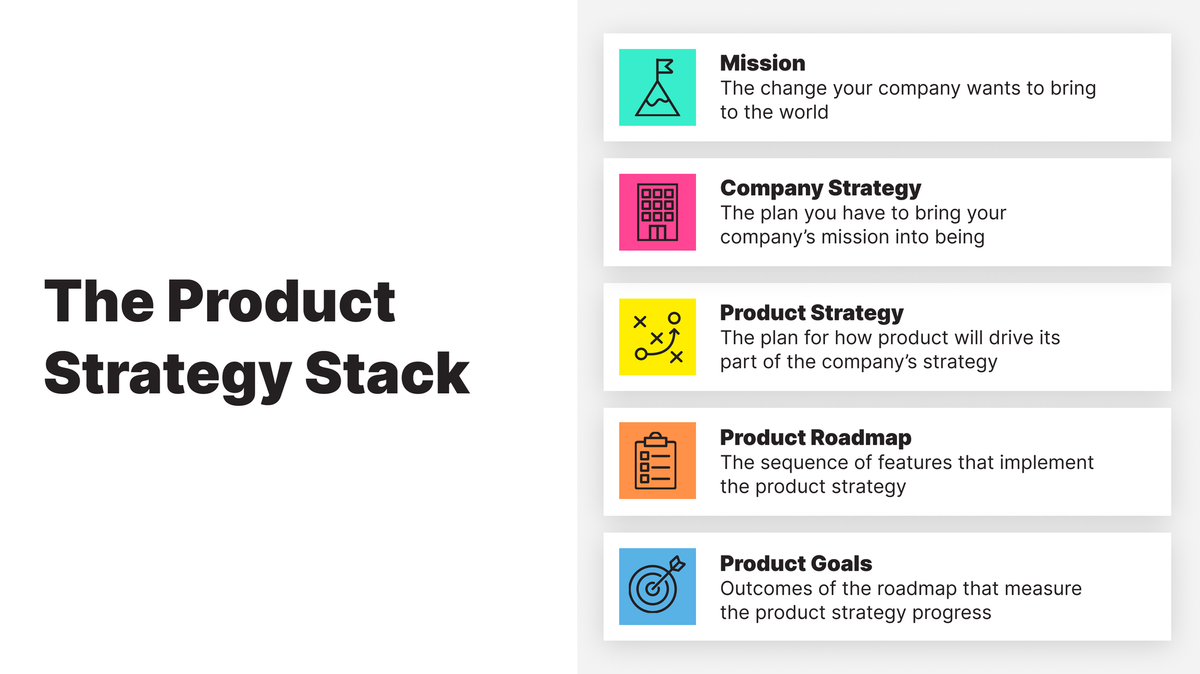
This guide will unpack the components of an effective framework, explore renowned options, and share best practices to implement a strategy tailored to your business.
In today's competitive landscape, having a rock-solid product strategy framework is the key to developing successful products that captivate customers and drive business growth.
But what exactly is a product strategy framework, and how do you choose the right one for your work?
At its core, a product strategy framework is a systematic approach to defining your product vision, understanding your target users, setting objectives, and constructing an execution roadmap. It provides the foundation to align your product efforts with wider business goals.
An effective framework acts as a compass that points your product team toward a shared north star. It empowers you to make strategic decisions, allocate resources intelligently, and course-correct quickly based on real user insights. Leading companies like Netflix and Amazon are advocates of solid product strategy frameworks.
In this guide, we will unpack the components of an effective product framework, explore renowned frameworks like Reforge TARS and Bucket STARS, and share best practices to implement a framework tuned to your business needs. With a tight product strategy, you can build products that delight users, outpace competitors, and catapult your business growth to new heights.
Key Takeaways
- Product strategy frameworks provide a systematic approach to create and execute well-defined strategies for successful product development.
- Key components of a framework include product vision, target audience, market research and quantifiable objectives.
- Implementing best practices such as regularly reviewing/updating the strategy, fostering open communication among stakeholders & measuring success can ensure effective implementation of the framework.
The Essence of a Product Strategy Framework

A product strategy framework is a systematic approach to create and execute a well-defined product strategy. It includes setting measurable goals, defining the criteria and building a product roadmap. It serves as the backbone of your product development process, ensuring that your product teams are consistently working towards the same objectives and delivering products that meet the needs of your target audience.
The impact of a product strategy framework on business growth is undeniable. Companies with a successful product strategy framework are more likely to see consistent growth in market share and customer satisfaction, as they are better equipped to understand and address the pain points of their target customers. In essence, a product strategy framework serves as a compass that guides your product’s development, aligning it with your company’s mission and vision statement, and ultimately leading to successful products and increased market share.
Key Components of a Product Strategy Framework
A product strategy framework is built upon several key components that, when combined, provide a comprehensive approach to product development. These essential elements include product vision, target audience, market research, and quantifiable objectives. A clear product vision sets the direction and purpose of the product, ensuring consistency across the organization, motivating team members, and maintaining focus on long-term objectives and similar growth patterns.
Grasping customer needs is just as vital when shaping a successful product strategy framework. Conducting market research allows you to pinpoint the preferences and pain points of your target audience, enabling you to shape your product development strategy accordingly. This customer-centric approach ensures that your product delivers real value to the customers and meets their ever-evolving needs, ultimately leading to increased customer satisfaction and product success.
The Role of a Product Strategy Framework in Business Growth
A product strategy framework contributes significantly to business growth by guiding product development and aligning it with overall business objectives. For instance, a product launch strategy, which can be considered a focus strategy, aims to attain increased user acceptance and brand expansion. A well-defined product strategy framework enables you to evaluate the potential success of a product or feature before its launch, thereby reducing the risk of failure and optimizing resource allocation.
Moreover, a product strategy framework can help you identify new market opportunities and explore untapped potential. Adopting frameworks like the Blue Ocean product management framework, which focuses on creating new business opportunities in uncontested markets, allows you to establish a unique value proposition and market positioning that distinguishes your product from competitors. This not only helps in gaining market share, but also enhances customer satisfaction and loyalty.
Popular Product Strategy Frameworks

Having understood the significance of a product strategy framework, it’s time to delve into some renowned frameworks that have propelled companies to impressive growth.
These frameworks include:
- DHM Netflix Framework
- Amplitude Product Strategy Framework
- ProductStrategy.co Framework
- Reforge TARS Framework
- Bucket STARS Framework
Each of these frameworks has its unique strengths and focus areas, catering to different business needs and objectives.
While some frameworks prioritize delighting customers and creating hard-to-copy features, others focus on acquisition, retention, and monetization strategies. In the sections to follow, we will examine each of these frameworks in greater detail, spotlighting their principal features and benefits. This will help you gain a better understanding of the different frameworks available and guide you in choosing the one that best aligns with your business goals and objectives.
DHM Netflix Framework

The DHM Netflix Framework is a strategic model formulated by Netflix's former VP of Product, Gibson Biddle. It provides a framework for developing customer-focused products and initiatives that deliver joy, stay ahead of copycats, and boost profits. DHM stands for:
- Delight
Go beyond meeting expectations to create truly memorable, joyful experiences for customers. Think outside the box to surprise and excite. - Hard to Copy
Build unique features and offerings that are difficult for competitors to replicate. Leverage patented technologies, novel business models, branding, and more to maintain a competitive edge. - Margin Enhancing
Ensure new products and initiatives also contribute positively to the bottom line. Deliver delights efficiently and boost margins through smart operational decisions.
In a nutshell, the DHM Framework pushes teams to:
- Wow customers with innovative, unexpected delights that spark joy.
- Constantly stay a step ahead of copycats with strategic tech and business model choices.
- And do it profitably by ensuring delights also boost margins.
By balancing these three elements, companies can gain loyal fans, fend off rivals, and achieve sustainable profitable growth. The DHM model provides a competitive playbook for delighting customers all while staying lean and staying ahead.
Amplitude Product Strategy Framework

The Amplitude Product Strategy Framework is a comprehensive approach to creating a successful product strategy by leveraging data and insights. This framework helps companies delight their customers, plan for growth, and differentiate their products from the competition.
In the fast-paced world of product development, having a data-informed product strategy is crucial for success. Amplitude's Product Strategy Framework offers a three-step approach to help you create a winning strategy that's backed by data and insights:
- Vision
Sets the direction and purpose of the product. - Objectives
Define the goals to be achieved. - Roadmap
Outlines the plan for achieving those goals.
The Amplitude Product Strategy employs both qualitative and quantitative data, empowering you to make informed decisions about your product and ensure its relevance and alignment with the changing needs of your customers.
ProductStrategy.co Framework

The Product Strategy.co. Framework is a comprehensive two-level product strategy framework, comprising company-level and feature-level product strategy. The framework helps organize the strategy into simple buckets:
- Scope – The scope of features or products in the strategy.
- Owner – Who owns the definition of the strategy.
- Executor – Who owns the execution of the strategic plan.
- Outlook – The time horizon in which the strategy operates.
- Refresh Timeline – The cadence to refresh the strategy.
- Length – The recommended length of the plan.
- Context – The context included to back the strategy.
- Tactics – The tactics defined by the strategy.
The company-level strategy focuses on the overall direction of the product, whereas the feature-level strategy concentrates on the individual features and how they integrate with the overall product strategy.
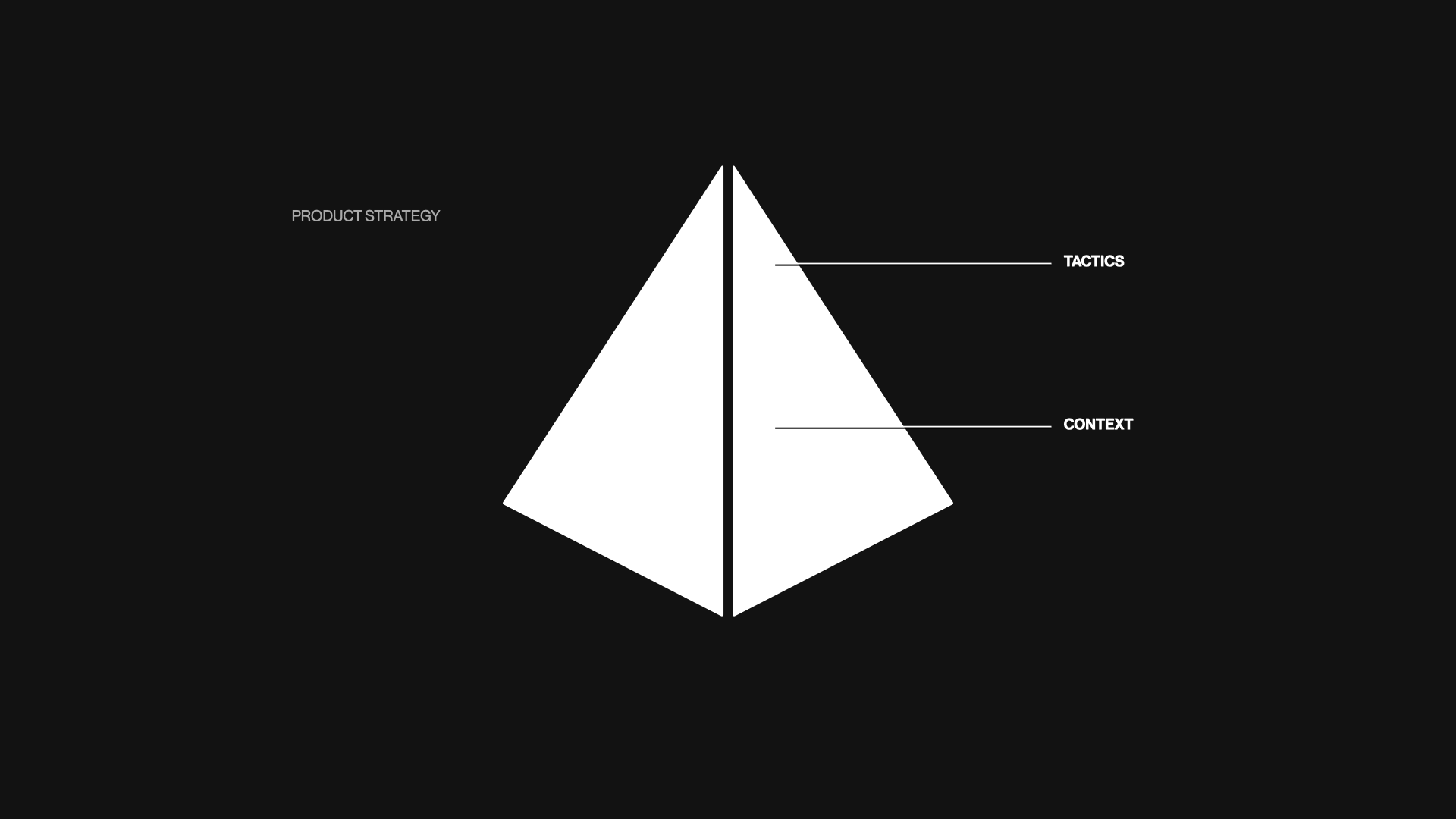
This framework covers all aspects of product development and growth, ensuring that your product strategy remains aligned with your business objectives and delivers maximum value to your customers.
Assess Impact on Business Objectives
Creating innovative product features is only step one. The real question is - how do these new tools, updates, and experiences actually move the needle for your business?

Introducing two frameworks that help you go beyond output to truly assess outcomes. Welcome Reforge TARS and Bucket STARS - mnemonic superheroes ready to take your product analytics to the next level.
TARS and STARS transform vague notions of "engagement" into actionable metrics that pinpoint what's driving growth (or decline). Arm yourself with these frameworks and start assessing real impact on your core business goals. From dialing in your target audience to monitoring satisfaction, adoption rates, and retention, TARS and STARS put the power in your hands to focus on what matters most.
Reforge TARS Framework
Imagine a world where product managers can effortlesslybalance business goals and user needs, unlocking the secrets toproduct success and customer satisfaction. This dream canbecome a reality with the TARS Framework, a game-changing approach that revolutionizes the way we evaluate and optimize product features.Developed by the experts at Reforge, the TARS Frameworkfocuses on four critical areas: Target Audience, Adopted, Retention, and Satisfaction
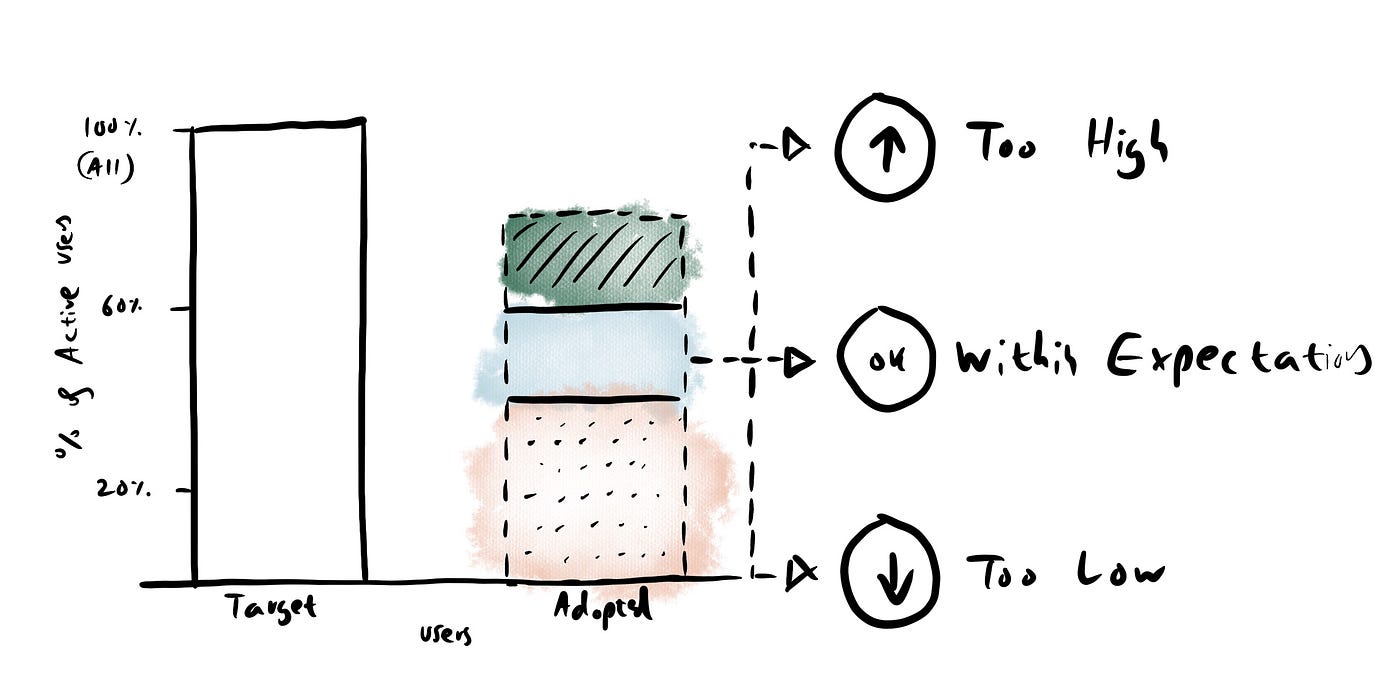
By diving deep into these aspects, product managers can gain a comprehensive understanding of feature performance, identifying strengths and weaknesses to drive continuous improvement.
The Four Pillars of TARS
- Target Audience
Identify the specific user segments that your feature aims to serve. Understanding your target audience is crucial for tailoring your feature to their needs and preferences. - Adopted
Measure the percentage of your target audience that actively uses your feature. This metric helps you gauge the initial success of your feature and identify areas for improvement in user onboarding and feature discovery. - Retention
Assess the percentage of users who continue to use your feature over time. High retention rates indicate that your feature is providing ongoing value to users, while low retention rates signal the need for further optimization. - Satisfaction
Evaluate user satisfaction with your feature through qualitative and quantitative feedback. This insight allows you to address user pain points and enhance the overall user experience.
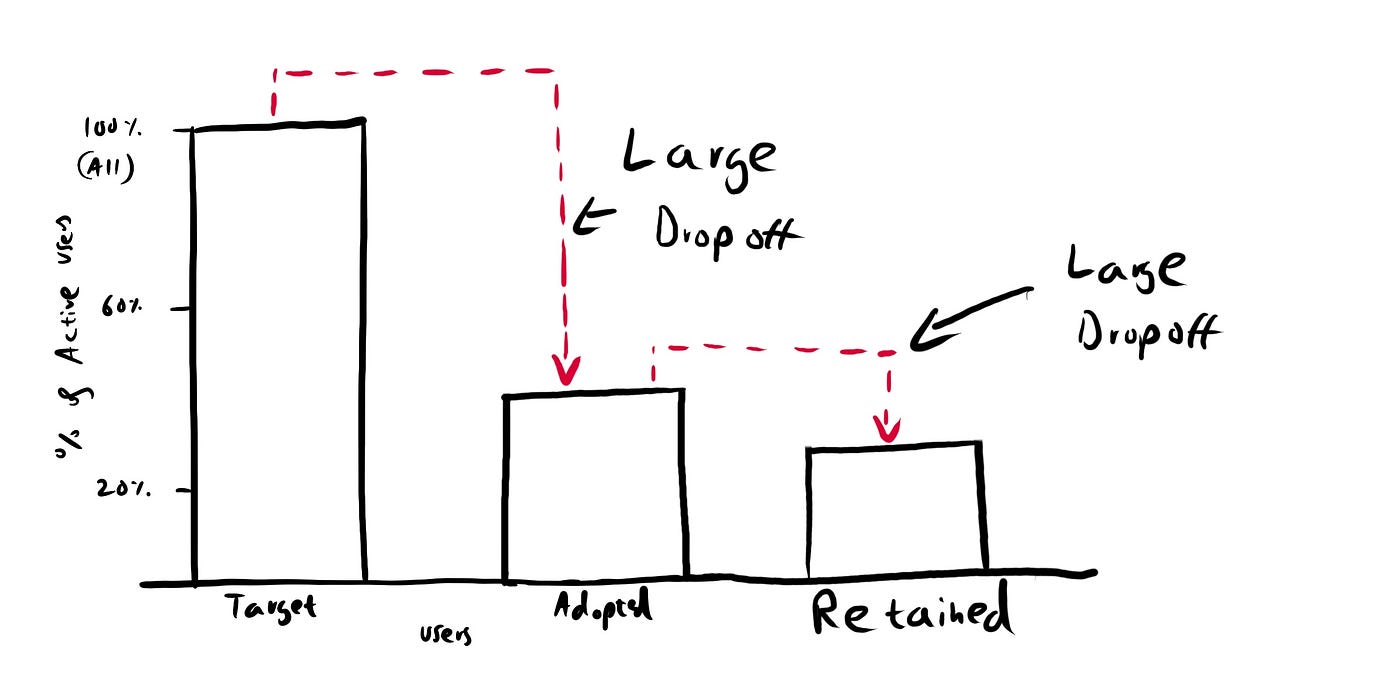
This framework assists in gauging the success metrics for a product’s features. This framework enables you to:
- Understand your target audience
- Track the adoption rate of your product
- Monitor user retention
- Measure customer satisfaction
Focusing on these key performance indicators, the Reforge TARS Framework aids in pinpointing areas for improvement and fine-tuning your product strategy for optimum impact.
Bucket STARS Framework
The Bucket STARS Framework is an interesting approach to assessing how a company has interacted with a feature in Bucket. The acronym stands for:
- Segment
Identifying the target customer segment for the feature - Tried
Assessing how many customers have tried the feature - Adopted
Measuring the rate of adoption of the feature - Retained
Evaluating user retention for the feature - Satisfied
Gauging customer satisfaction with the feature
This framework helps you identify the most crucial features for your company’s success by assessing how customers interact with the feature, the rate of adoption, user retention, and customer satisfaction.
The Bucket STARS Framework, with its focus on these essential metrics, helps you prioritize features and initiatives with high potential for promoting business growth, while staying intellectually honest about project impact.
Advantages of Implementing a Product Strategy Framework

The implementation of a product strategy framework brings several benefits, having a substantial impact on your business growth and success. Here are some of the benefits:
- A well-defined framework helps improve your decision-making process by providing a clear direction and focus for your product development efforts.
- It enables you to identify potential risks and opportunities.
- It offers a structured approach to evaluate different options, ensuring that your product strategy is result-oriented and aligned with your overall business objectives.
Additionally, a solid product strategy framework fosters team alignment by making sure all team members share a common understanding and work towards shared goals. It fosters open communication and collaboration among cross-functional teams, which is crucial for successful product development.
Additionally, a customer-centric framework is instrumental in increasing customer satisfaction, as it helps you design and develop products that cater to the needs and preferences of your target audience.
Improved Decision-Making Process

A well-structured product strategy framework not only offers a roadmap and a clear path for the product, but also assists in defining the product’s mission and objectives, determining which products to develop and market, and steering teams in making tactical decisions.
By having a framework in place, decision-makers can:
- Make more informed and strategic choices that are in line with the overall product strategy
- Better allocate resources
- Reduce the risk of failure
- Increase the likelihood of product success.
Enhanced Team Alignment
A product strategy framework establishes a shared understanding for the entire product team, making sure everyone works towards common objectives and delivers products that satisfy customer needs. By providing a uniform understanding of the product’s objectives, target demographic, and fundamental components, a product strategy framework is established.
- Synchronizes the product strategy with the organization’s general strategy and objectives
- Displays and prioritizes assignments
- Encourages communication and collaboration
- Devises a playbook for alignment and attaining product/market fit
This results in more efficient and productive teams that are better equipped to tackle challenges and drive business growth.
Increased Customer Satisfaction
A customer-centric product strategy framework guarantees that your product development initiatives are centered around the needs and preferences of your target customers. By conducting market research and gathering customer feedback, you can identify pain points and areas of improvement, and make modifications to your product to better satisfy customer needs and expectations.
This not only helps you retain existing customers, but also attracts new ones, ultimately leading to increased customer satisfaction and loyalty, and in turn, driving business growth.
Selecting the Right Product Strategy Framework for Your Business
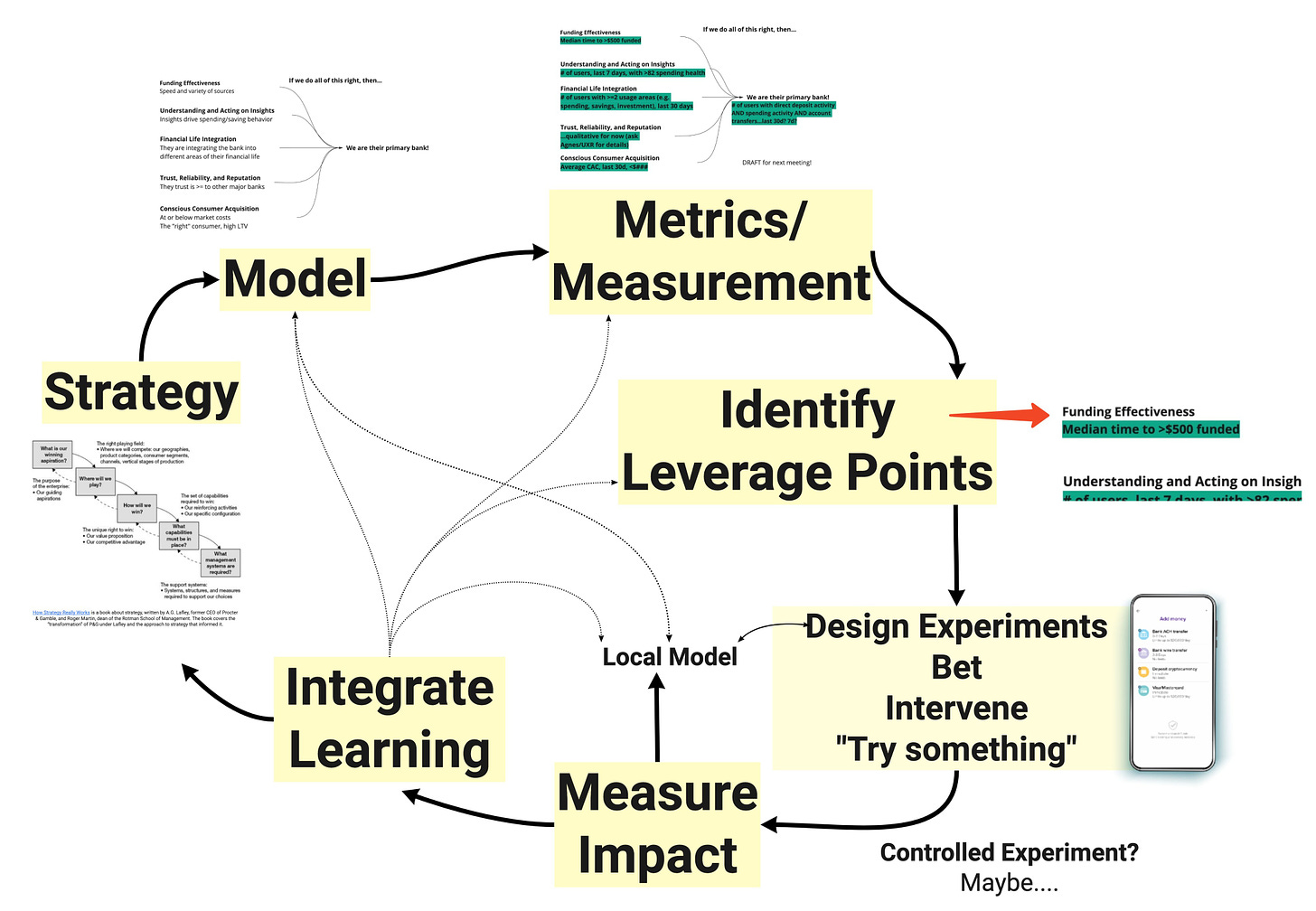
Choosing the appropriate product strategy framework for your business is a crucial decision, given its direct influence on the success of your product development initiatives and overall business growth. The most suitable framework should accommodate your specific requirements and be adaptable to evolving market conditions and customer needs.
To determine the right framework for your business, you should:
- Assess your business needs
- Analyze different frameworks to understand their strengths and weaknesses
- Choose the framework that aligns best with your business goals and objectives
Remember, there is no one-size-fits-all approach when it comes to selecting a product strategy framework. The goal is to identify the framework that fulfills your specific business needs and objectives, thereby laying a sturdy foundation for your product development initiatives.
In the following sections, we will guide you through the process of selecting the right product strategy framework for your business.
Assessing Your Business Needs
Evaluating your business needs and objectives is crucial to identify the product strategy framework that fits your business best. This involves:
- Clearly delineating your objectives
- Evaluating your resources and capacity
- Recognizing your target audience
- Undertaking an organizational scan
- Gathering data to analyze the results
By understanding your business needs and objectives, you can identify the business model that best aligns with your overall strategy and vision, and provides a solid foundation for your product development efforts.
Analyzing Different Product Strategy Frameworks
With a clear grasp of your business needs and objectives, you can proceed to evaluate various product strategy frameworks, understanding their pros and cons. This involves:
- Examining the alignment of each framework with your business objectives
- Assessing the strengths and weaknesses of each framework
- Considering the customer needs that each framework addresses.
By evaluating these factors and considering your existing strategy, you can choose the product strategy framework that best aligns with your business goals and offers the greatest potential for success.
Steps to Develop a Powerful Product Strategy Framework
Creating a strong product strategy framework requires executing a series of strategic steps effectively, which can result in significant business growth and success. These steps include:
- Defining your product vision
- Conducting market research and understanding customer needs
- Setting measurable goals and KPIs
- Building a comprehensive product roadmap
By following these steps, you can create a robust product strategy framework that aligns with your overall business objectives and helps you deliver products that cater to the needs and preferences of your target customers.
The implementation of a product strategy framework is not a one-off task. It requires continuous monitoring, evaluation, and refinement to ensure that it remains relevant and aligned with the ever-evolving market conditions and customer needs. In the sections to follow, we will explore each of these steps in detail and guide you through developing a potent product strategy framework for your business.
Defining Your Product Vision
Defining a clear and compelling product vision is the first step in developing a powerful product strategy framework. Your product vision should:
- Outline the purpose and value proposition of your product
- Serve as a guiding light for your product development efforts
- Be aligned with your company’s overall strategy and mission
- Be easily understood and communicated to your product team and relevant stakeholders.
Creating a robust product vision helps keep your product development initiatives focused and aligned with your long-term goals and growth trajectory.
Conducting Market Research and Understanding Customer Needs
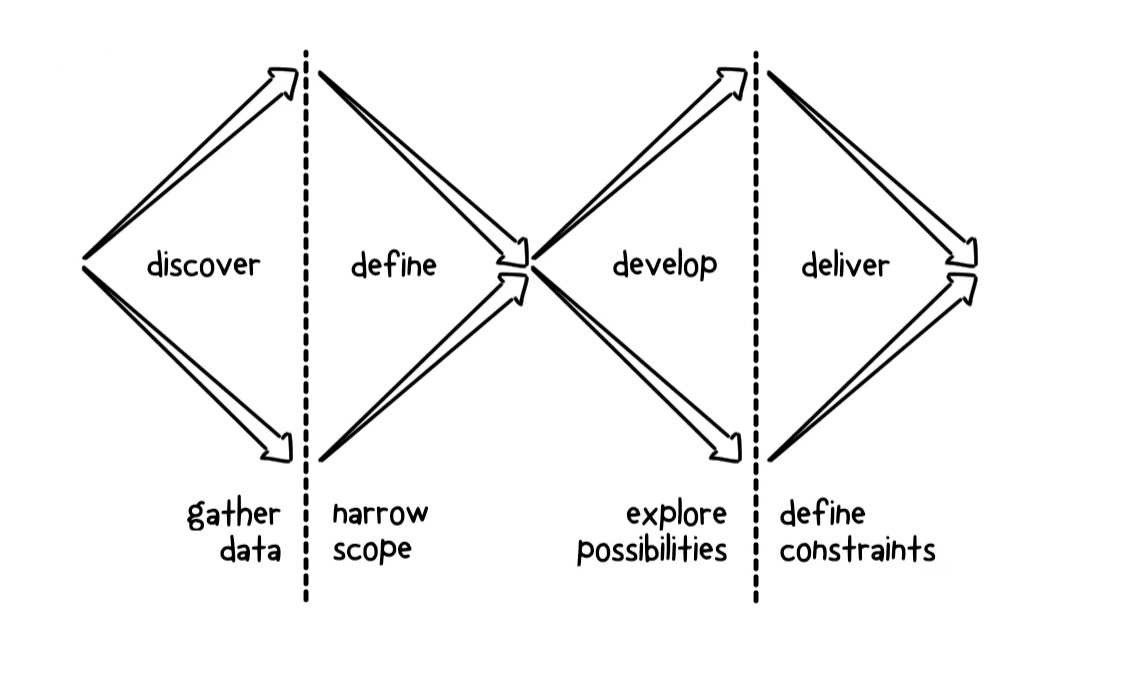
Conducting market research is an essential step in developing a powerful product strategy framework, as it helps you gain a deeper understanding of your target market, their needs, preferences, and pain points. This information is invaluable in informing your product strategy and ensuring that your product development efforts are tailored to address the needs of your target audience.

By staying abreast of market trends and customer needs, a product manager can identify opportunities for product innovation and growth, and make informed decisions about their product’s features, pricing, and positioning.
Setting Measurable Goals and KPIs
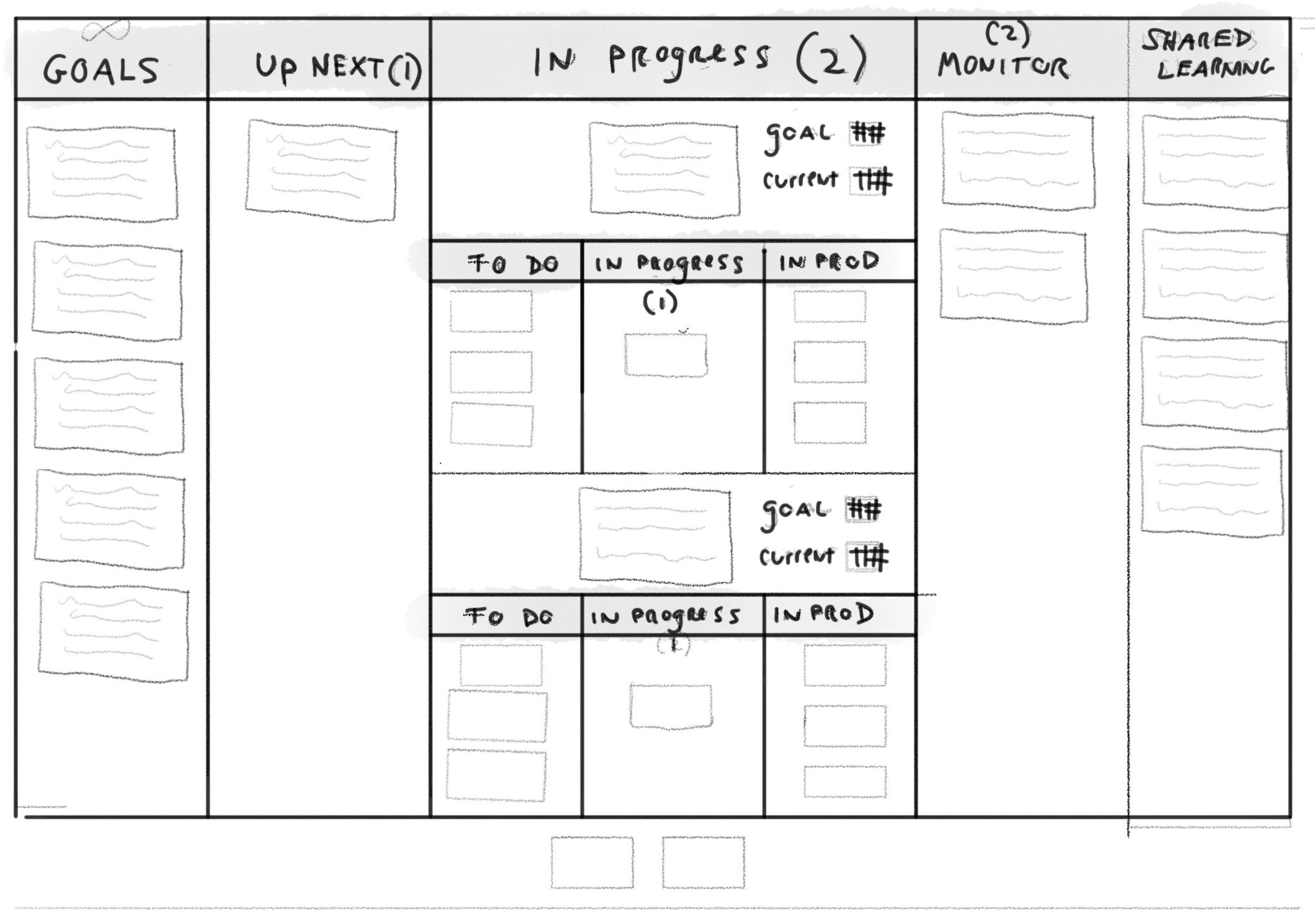
It’s vital to set measurable goals and KPIs to monitor the progress and success of your product strategy framework. By establishing clear, quantifiable objectives and KPIs, you can ensure that your product strategy is result-oriented and focused on delivering tangible outcomes.
Some common KPIs include:
- Customer acquisition rate
- Customer retention rate
- Customer lifetime value
- Customer satisfaction score
By regularly monitoring these metrics, you can identify areas of improvement, optimize your product strategy, and ultimately drive business growth.
Building a Comprehensive Product Roadmap
An extensive product roadmap, outlining key milestones, initiatives, and timelines for product development and growth, is a vital part of a potent product strategy framework. Your product roadmap should be aligned with your overall product strategy and provide a clear path towards achieving your business objectives.
By regularly reviewing and updating your product roadmap, you can ensure that your product development efforts remain on track and adapt to changing market conditions and customer needs.
Best Practices for Implementing Your Product Strategy Framework
To effectively put your product strategy framework into action, you should adopt a set of best practices that can boost your framework’s potential and stimulate business growth. These best practices include regularly reviewing and updating your strategy, fostering open communication among stakeholders, and measuring success and learning from feedback. By adhering to these best practices, you can create a strong foundation for your product development efforts and ensure that your product strategy remains relevant and aligned with your overall business objectives.
In the forthcoming sections, we will delve into each of these best practices, providing insights on how to implement your product strategy framework effectively, guaranteeing successful product development and business growth.
Regularly Review and Update Your Strategy
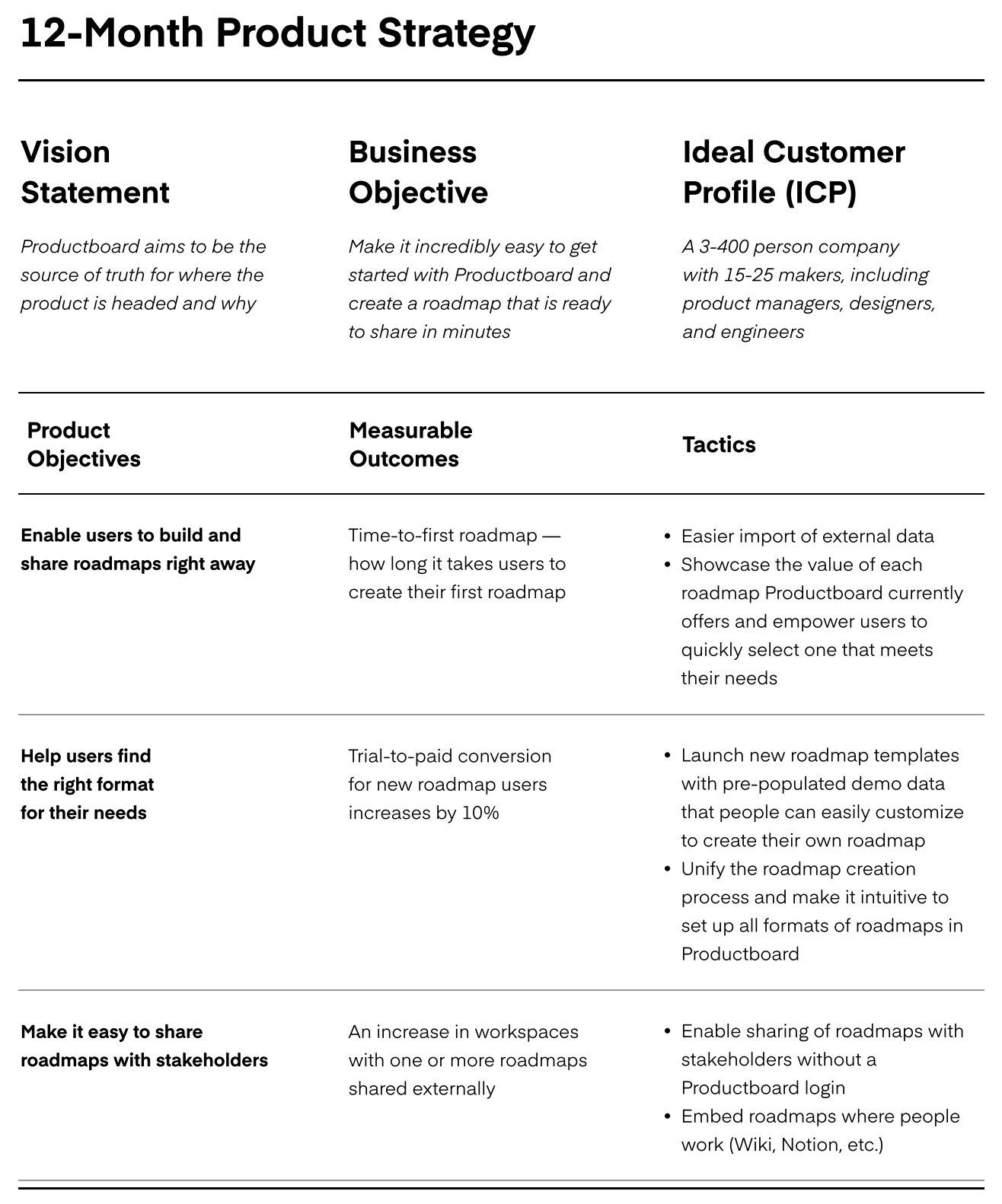
It’s essential to regularly review and update your product strategy framework to maintain its relevance and alignment with evolving market conditions and customer needs. By periodically evaluating the current strategy, collecting input from stakeholders, and making modifications as required, you can maintain the effectiveness of your framework and ensure that it continues to drive business growth.
Additionally, regular reviews allow you to identify potential risks and opportunities, and make informed decisions about your product’s features, pricing, and positioning.
Foster Open Communication Among Stakeholders
Encouraging open communication among stakeholders is crucial for the successful implementation of your product strategy framework. By promoting transparency and collaboration among cross-functional teams, you can create an environment where everyone is on the same page and working towards the same goals.
This not only helps in achieving better team alignment, but also allows for effective decision-making and resource allocation. Encourage regular meetings, workshops, and feedback sessions to keep stakeholders informed about the progress of your product strategy and ensure that everyone is aligned with the overall objectives and direction of the product.
Measure Success and Learn from Feedback
Evaluating the success of your product strategy framework and learning from feedback are indispensable in honing and enhancing your strategy. By tracking KPIs and gathering feedback from customers and team members, you can identify areas of improvement and make necessary adjustments to your product strategy.
This not only helps you optimize your product development efforts, but also ensures that your product remains relevant and aligned with the ever-evolving needs of your target audience. Remember, continuous improvement is the key to ensuring the long-term success and sustainability of your product strategy framework.
Summary
In conclusion, implementing a well-defined product strategy framework is crucial for any business looking to develop successful products that meet customer needs and drive growth. At its core, a product strategy framework provides a systematic approach for setting a product vision, understanding the target audience, setting measurable goals, and building a roadmap to achieve those objectives.
Popular frameworks like the DHM Netflix, Reforge TARS, Amplitude Product Strategy, and Bucket STARS focus on different aspects from delighting customers to driving adoption and retention. When selecting a framework, it is important to assess your business needs and choose the one that best aligns with your goals.
Once you have a framework in place, best practices like regularly reviewing and updating the strategy, promoting open communication amongst teams, and measuring performance through KPIs can ensure effective execution. With the right framework and implementation approach, you can boost team alignment, make informed product decisions, increase customer satisfaction, and ultimately drive business growth.
In a dynamic market, a solid product strategy framework serves as the backbone for developing products that meet evolving customer needs and help you outpace competitors. By following the guidelines outlined, you can craft a winning product strategy tailored to your business goals.
Frequently Asked Questions
What is a product strategy framework?
A product strategy framework is a high-level plan that outlines what a business aims to achieve with its product and how it plans to do so. It provides a structured approach to developing and implementing a product strategy, ensuring that everyone in the organization is aligned and working towards the same goals. The framework helps answer key questions such as who the product will serve (personas), how the product will benefit those personas, and the company's goals for the product throughout its lifecycle.
There are several classical, winning product strategy frameworks that businesses can use, such as the BCG Matrix, Product VisionBoard, AARRR Framework, Three Horizons Framework, and Product Strategy Canvas. These frameworks can guide teamsfrom ideation to execution, standardize various processes in a product's life cycle, and make it easier to get everyone on the same page.
A winning product strategy framework is not just a plan but an intricate blueprint that lays the foundation for your product's vision, its unique benefits to users, and how it stands out in the competitive landscape. Rooted in real data and user research, this framework guides you in identifying target markets, articulating a compelling value proposition, and constructing robust marketing and positioning plans. Essentially, a quality strategy serves as your compass for product initiatives.
What are the 4 major elements of a product strategy?
A quality product strategy is sculpted from four pivotal elements:
- Customers: Knowledge obtained from user research to gain a better sense of their evolving needs.
- Competitors: In-depth analysis of the competitive landscape to carve out your niche.
- Business Objectives: Clearly defined aims that your product strategy serves to achieve.
- Macro Environment: Factors like economic conditions, regulatory changes, and technological shifts that could influence your strategy.
Grasping these elements is crucial for your strategy to flow naturally and effectively.
How do you create a product strategy framework?
Creating a product strategy framework is a crucial element of product development and management. Follow these steps to establish a comprehensive and effective framework:
- Step 1: Define the Vision
Start by establishing a high-level product vision. This vision should guide the overall strategy and align with your organization's goals. - Step 2: Understand Customer Demands and Needs
Conduct thorough research to understand your target users, their needs, and pain points. This step is crucial in ensuring your product meets the demands of its intended audience. - Step 3: Analyze Competitors
Analyze the competitive landscape and identify opportunities for differentiation. Understanding what your competitors offer can help you create a product that stands out. - Step 4: Analyze Market Trends
Stay abreast of market dynamics and trends that may impact your product. This understanding can help you anticipate changes and adapt your strategy accordingly. - Step 5: Set Measurable Goals and Objectives
Establish quantifiable targets to track progress and ensure alignment with your vision. These goals and objectives should serve as a benchmark for success. - Step 6: Determine the Value Proposition
Define the unique benefits the product offers to customers and how it stands out from competitors. This value proposition will be a key selling point for your product. - Step 7: Develop a Go-to-Market Strategy
Plan how to launch, promote, and distribute the product. A well-thought-out go-to-market strategy can significantly impact your product's success. - Step 8: Prioritize Features and Requirements
Decide which features to include in the product based on their importance, impact, and alignment with your strategy. This prioritization will guide the product development process. - Step 9: Create a Product Roadmap
Outline the timeline and milestones for product development, including key features and iterations. This roadmap will keep your team on track and help manage expectations. - Step 10: Allocate Resources
Finally, assign team members and budget to support the product strategy. Adequate resource allocation is vital for implementing your strategy effectively.
By following these steps, you can create a comprehensive product strategy framework that aligns with your organization's goals, addresses customer needs, and sets your product up for success in the market.
What are typical product strategies?
The four quintessential product strategies are:
- Comparative Strategy:
This strategy involves highlighting the similarities of your product with those of your competitors to appeal to their customer base. It's a way of saying, "Our product does what theirs does, but better." - Differentiation Strategy:
Differentiation strategy is about setting your product apart from the competition. This could be through unique features, superior functionality, or innovative design. It's all about making your product stand out in the crowded marketplace. - Segmentation Strategy:
Segmentation strategy involves tailoring your product messaging to appeal to different consumer groups. By understanding the unique needs and preferences of different segments, you can maximize the perceived benefits of your product. - Cost Strategy:
Competing based on price and offering the lowest cost product is an especially effective in highly price-sensitive markets where consumers are primarily driven by cost considerations. However, it's important to ensure that the pursuit of lower costs doesn't compromise the quality of the product, as this could negatively impact the brand's reputation and customer satisfaction.
These strategies are essential tools to differentiate your product, achieve your company's goals, and target the right audiences with optimal messaging.
What are some popular product strategy frameworks?
Popular product strategy frameworks include the DHM Netflix Framework, Reforge TARS Framework, Amplitude Product Strategy, Bucket STARS Framework, and ProductStrategy.co Framework.

